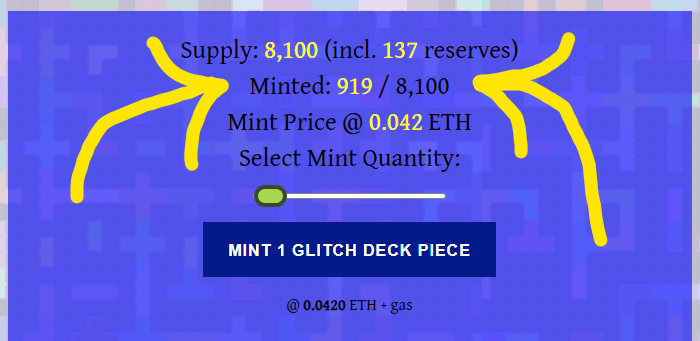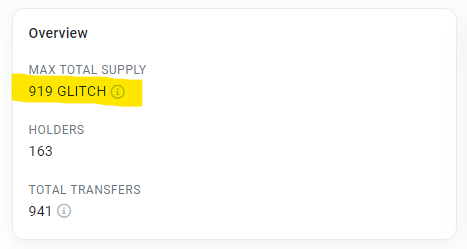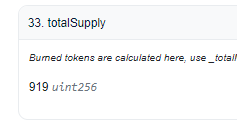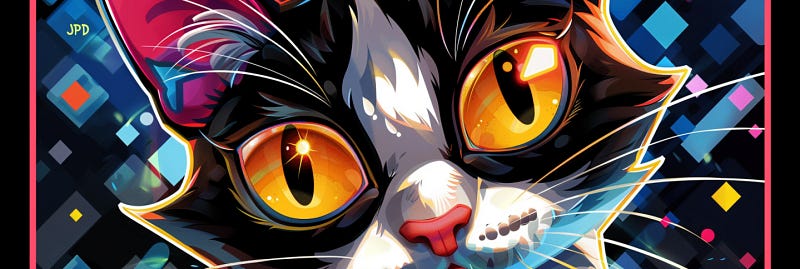Understanding the Importance of Mint Count on NFT Pages
Written on
The Role of Mint Count in NFT Strategy
When it comes to NFT minting applications, a frequent question arises: Should we display the current mint count on our minting page? While the straightforward answer is “No,” several factors warrant a deeper discussion.
To illustrate, consider my own minting app for the GlitchDeck NFT collection (which is still minting!). As shown in the screenshot below, I opted to display the current mint count, but this practice isn't universal among NFT projects.

Since mid-2022, as selling out NFT collections has become increasingly challenging, many clients have asked me whether displaying the mint count is essential. The prevailing thought is that if a newly launched NFT collection shows low sales, it may deter potential buyers. In an industry heavily influenced by hype, a stagnant mint counter can signal a lack of interest.
For those who participated in the NFT boom of mid-2021, the landscape was markedly different. Collections would often sell out almost instantly. I recall one of the early projects I worked on sold out so quickly that we initially thought there was a bug in the mint count display. The developer had to verify the code only to discover that the collection had sold out within minutes—leading to a minor glitch.
Fast forward to the present, and imagine being part of an NFT team that isn't currently favored by the prominent influencers on crypto-Twitter. You face a dilemma:
- Display the mint count, risking the impression that slow sales could deter new buyers.
- Hide the mint count, hoping that potential buyers won't be discouraged by its absence.
Regardless of your choice, the mint count remains accessible. For example, you can view the current numbers by checking the contract directly.

On platforms like Etherscan, you can click the "Token Tracker" link and see real-time data. Alternatively, you can look for the "totalSupply" variable in the contract’s “read contract” tab to find the total number of NFTs minted.

It's also possible to check the maximum supply setting, which can be crucial for your strategy. For instance, my maximum supply is set to 8,100.

The supply isn't a secret, so the decision to display it hinges on whether the optics are beneficial or detrimental.
Do Users Base Their Decisions on Mint Count?
In my opinion, yes. Many potential buyers indeed consider the mint count. Despite claims of support for a project, if they notice a lack of progress when they decide to mint, they might hesitate. Conversely, witnessing rapid sales could incite a fear of missing out (FOMO), prompting them to buy even if they weren’t initially inclined to do so.
Additionally, similar perception issues arise with allow lists, whitelists, and presales. I discuss some strategies around these topics in my article on “Strategies for NFT Teams Regarding Whitelists, Allow Lists, Presale Lists — How Many Wallets to Collect.”
Should You Conceal the Mint Count?
This is a complex question with no clear answer. As a developer, I understand how these minting applications function, and I know the mint count is always available. Personally, I wouldn't be deterred by not seeing the mint count, though I might check it myself. For me, it leans slightly towards "they should have just shown it." However, I have disabled the mint count for several clients.
The unfortunate reality is that ultra-hyped projects don’t need to grapple with this issue. They should display the mint count as it reflects their success, with the counter spinning rapidly.
Frankly, I find the dominance of influencers in the NFT market quite troubling. As I've expressed before, this creates an unfair environment. Therefore, I don't judge anyone for strategically opting not to display their mint count in the current state of the NFT space.
If you do choose to hide it, I recommend not removing that part of your code altogether. Instead, comment it out until you achieve the desired momentum, then reinstate it as your sales improve.

Jim Dee is a prolific writer, developer, and multimedia creator based in Portland. To learn more about him, his businesses, and his works, visit JPD3.com. Thank you for reading!
Consider these insights as you navigate the complexities of NFT minting strategies.
Chapter 2: Insights on NFT Minting Strategies
In this video titled "Maybe the best NFT minting strategy," we delve into effective tactics for successful NFT minting.
The second video, "NFT Tips & Tricks | How to Mint an NFT Directly From Smart Contracts," offers practical advice on minting NFTs directly from contracts.